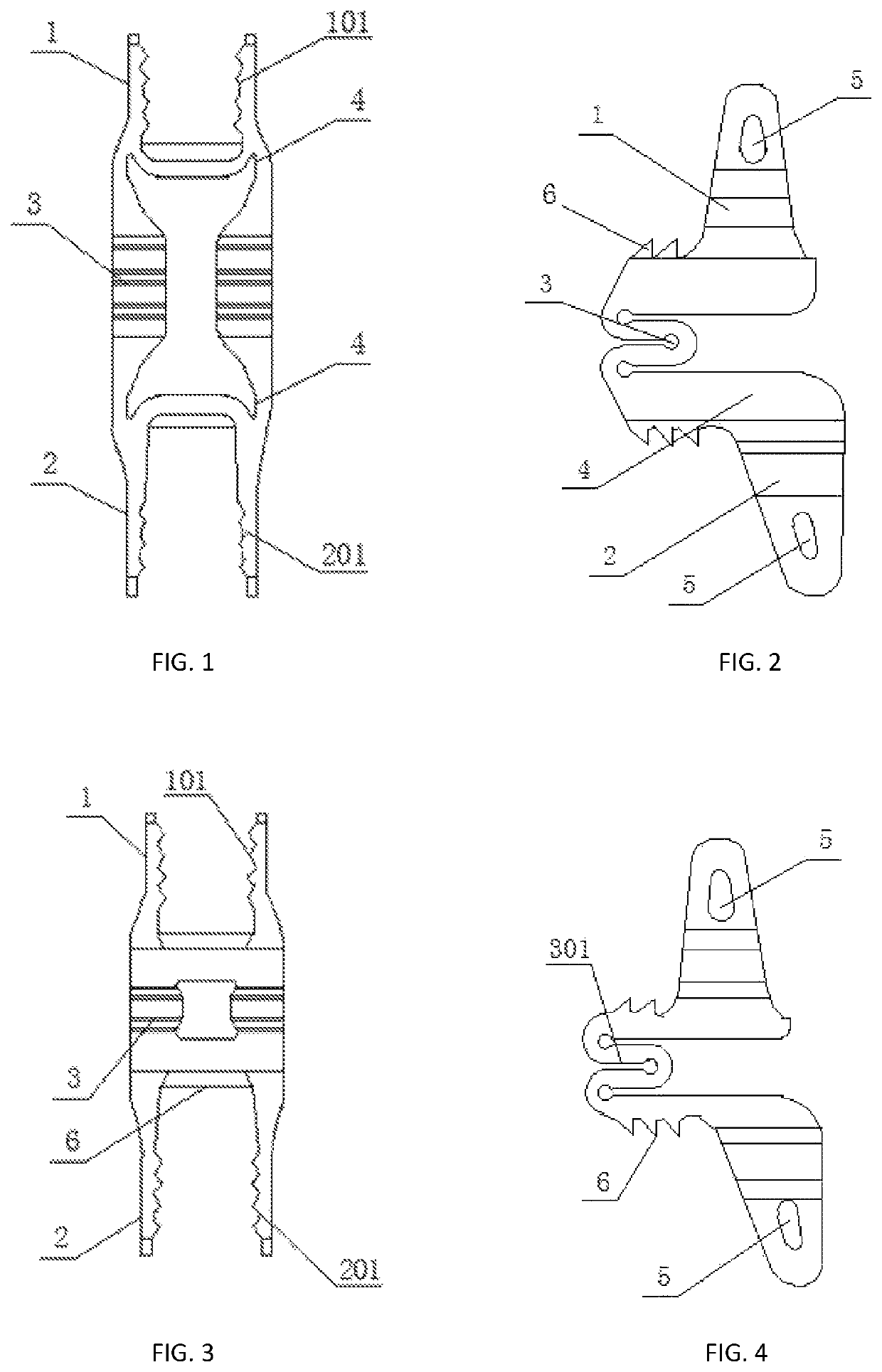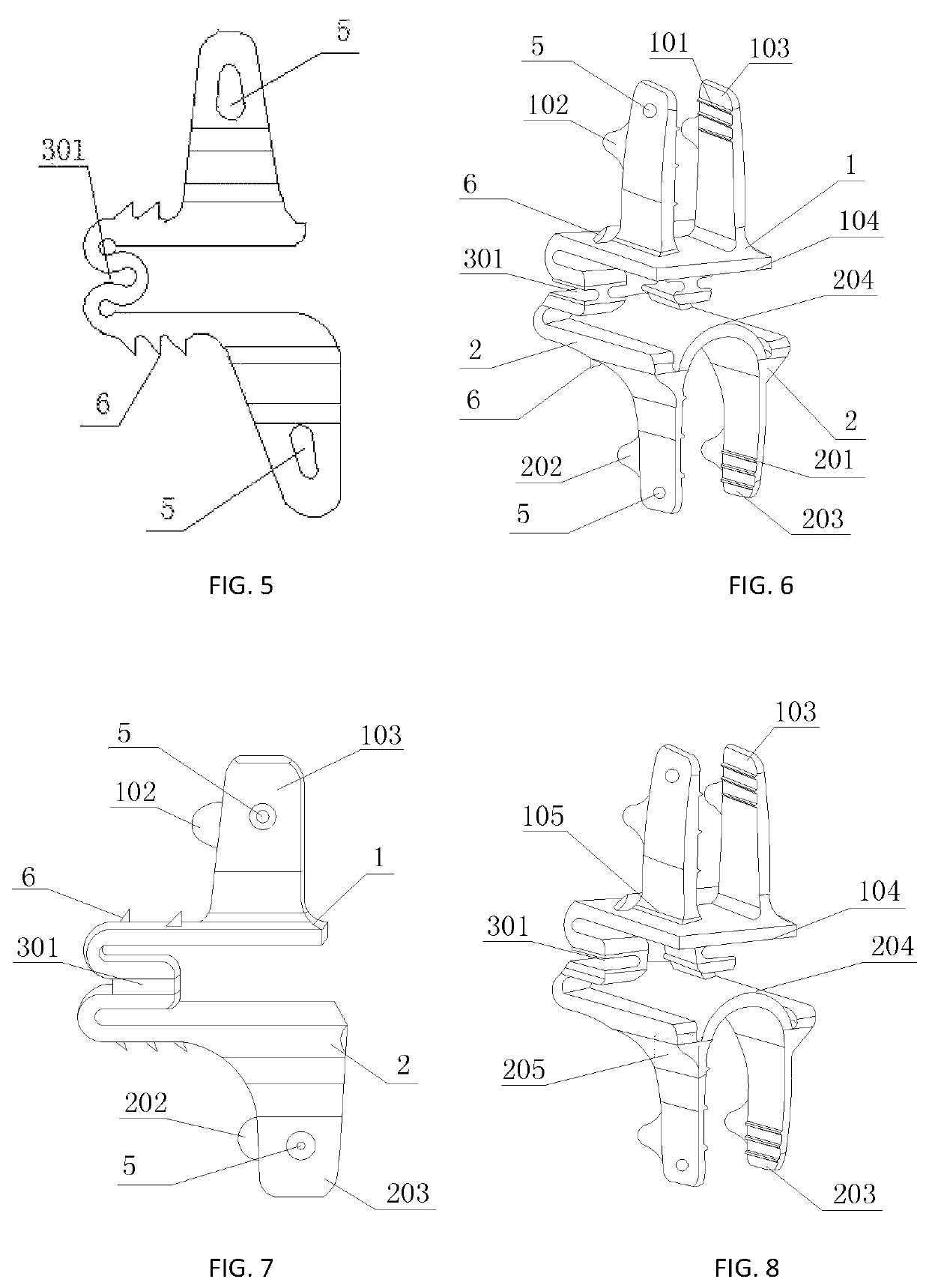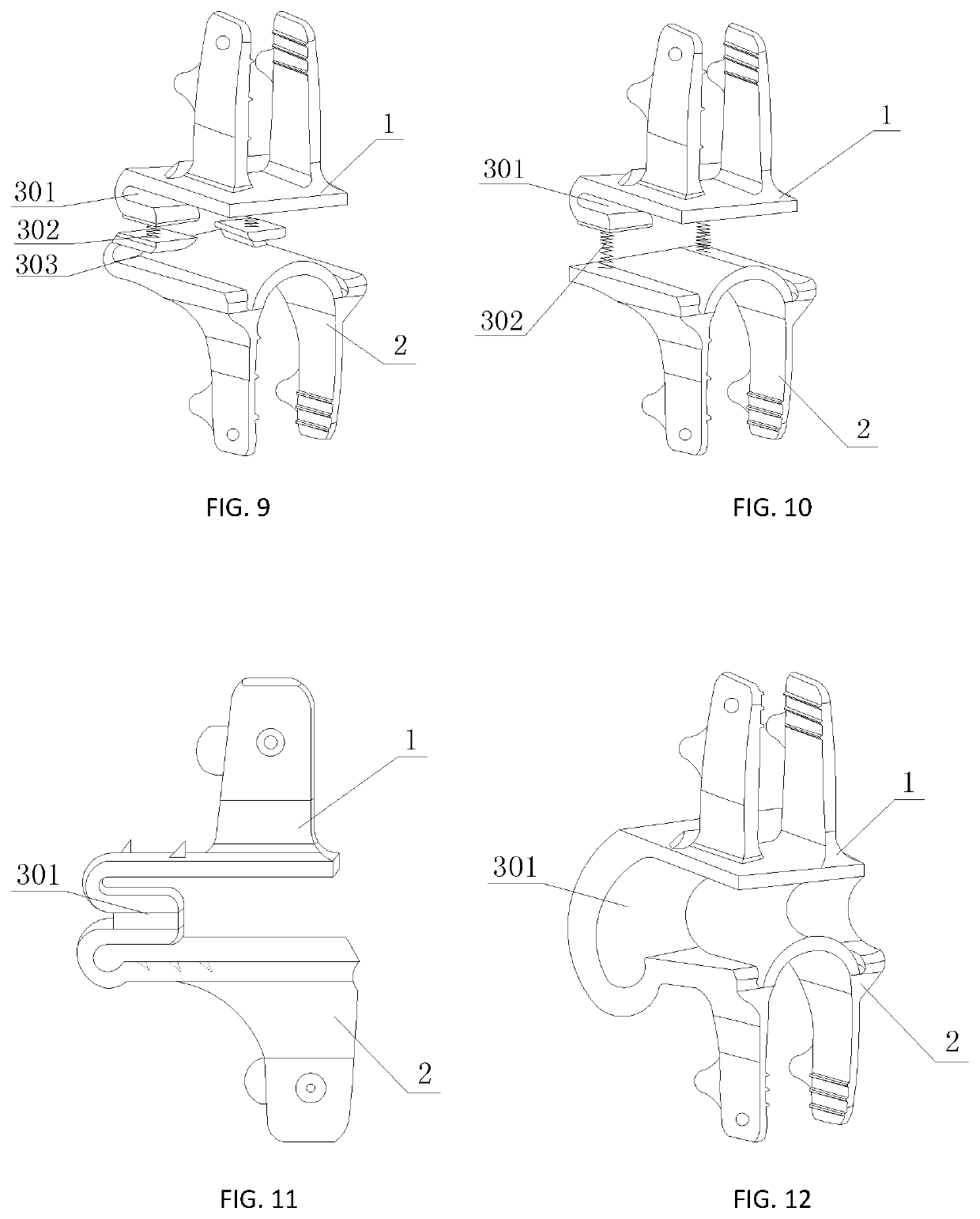Interspinous omnidirectional dynamic stabilization device
a dynamic stabilization device and interspinous technology, applied in the field of medical devices, can solve the problems of fixation failure, minor complications, and formation of pseudoarticulation or other complications, and achieve the effects of small size, strong ability of elasticity attenuation resistance, and reasonable design structur
- Summary
- Abstract
- Description
- Claims
- Application Information
AI Technical Summary
Benefits of technology
Problems solved by technology
Method used
Image
Examples
example one
[0058]As shown in FIGS. 1-5, the interspinous omnidirectional dynamic stabilization device includes a first fixing part 1, a second fixing part 2, a connecting structure 4 and an elastic structure 3. The first fixing part 1 and the second fixing part 2 are fixedly connected to each other through the connecting structure 4 and elastic structure 3, the bottoms of the first fixing part 1 and the second fixing part 2 are provided with one or more barbs 6, the elastic structure 3 is made up of one or more U-shaped structures 301 connected to each other, and the first fixing part 1 and the second fixing part 2 are provided with fixing holes 5 respectively. The direction of the fixing hole 5 is perpendicular to or not perpendicular to an external surface of the first fixing part 1 and the second fixing part 2.
[0059]Further, both ends of an inner side of the first fixing part 1 are provided with first clamping teeth 101, both ends of an inner side of the second fixing part 2 are provided wi...
example two
[0065]In this example, the first fixing part 1 and the second fixing part 2 are connected and integrated to each other through the elastic structure 3 directly, and both the first fixing part 1 and the second fixing part 2 are flexibly removable structures.
[0066]As shown in FIGS. 6-12, the interspinous omnidirectional dynamic stabilization device includes a first fixing part 1, a second fixing part 2 and an elastic structure 3. The first fixing part 1 is connected and integrated to the second fixing part 2 through the elastic structure 3 directly. Since the adjacent upper and lower spinous processes may have different dimensions and shapes, the first fixing part 1 and the second fixing part 2 may be asymmetric structures, or symmetric structures, which facilitates the matching with the sclerotin of the spinous process.
[0067]Further, as shown in FIGS. 6-8, the first fixing part 1 includes two first side wings 103, a base plate 104 and a first fastening structure 105, the two first si...
example three
[0072]In this example, the first fixing part 1 and the second fixing part 2 are two semi-U-shaped structures, and the connecting structure 4 connecting the two semi-U-shaped structures includes a holder 401 and a connecting plate 402.
[0073]As shown in FIGS. 13-25, the includes a first fixing part 1, a second fixing part 2, an elastic structure 3 and a connecting structure 4. The elastic structure 3 is arranged at the middle of the first fixing part 1 and the second fixing part 2. the first fixing part 1 and the second fixing part 2 are two semi-U-shaped structures. The first fixing part 1 is connected to the second fixing part 2 through the connecting structure 4 and the elastic structure 3. The connecting structure 4 may be strengthened by deforming the connecting structure 4 with an anti-off screw or bender after connection.
[0074]Further, the connecting structure 4 is made up of a holder 401 and a connecting plate 402, the holder 401 is arranged at the middle of the first fixing p...
PUM
 Login to View More
Login to View More Abstract
Description
Claims
Application Information
 Login to View More
Login to View More - R&D
- Intellectual Property
- Life Sciences
- Materials
- Tech Scout
- Unparalleled Data Quality
- Higher Quality Content
- 60% Fewer Hallucinations
Browse by: Latest US Patents, China's latest patents, Technical Efficacy Thesaurus, Application Domain, Technology Topic, Popular Technical Reports.
© 2025 PatSnap. All rights reserved.Legal|Privacy policy|Modern Slavery Act Transparency Statement|Sitemap|About US| Contact US: help@patsnap.com



